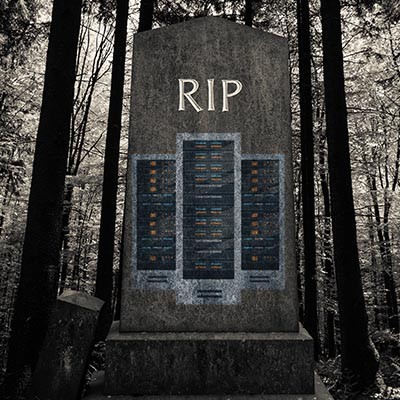Ferrum Technology Services Blog
The more complex and robust your IT infrastructure is, the greater the chances that it will undergo a system failure. Basically, according to Murphy’s Law, if something can go wrong, you should expect it to go wrong. To counteract this mentality with real, tangible methods that you can control, you’ll want to implement solutions that prioritize redundancy. This week’s blog is all about how you can build redundancy into your infrastructure through the use of data backup and restoration systems.
Business owners try to avoid downtime like the plague, but it’s often a challenge to do so. The impact of downtime can be devastating for even the most stable business, and this is even more so the case when you bring profits and bottom lines into view. We’ll take a look at how you can calculate the cost of a downtime event.
In terms of the sheer amount of technology your company utilizes, we’re willing to bet that a sizable chunk of it is made up of hardware. This includes devices like your workstations, routers, switches, and servers. Most of us understand that this technology does not last forever, so you should not only expect your hardware to fail, but anticipate it. In other words, you need to be prepared.
Business owners try to avoid downtime like the plague, but it’s often a major challenge. The impact of downtime can be devastating for even the most well-to-do business because it effectively stops productivity, but the costs keep. This month, we thought we’d take a look at how you can calculate the cost of a downtime event to help you understand the impact downtime can have on your business.
The other day, we introduced you to "the most connected human on Earth", Chris Dancy, and his story. Dancy had lost his job due to corporate downsizing, which in turn led the former IT manager to use his knowledge for the study of quantitative technologies and systems as part of a "quantitative life existence." In this second installment of our interview, Chris is going to explain how you too can lead a similar lifestyle.
Most tech-savvy people in this world will agree that if technology can provide the benefits it promises, it is worth giving a shot. However, these same people might feel uneasy about using technology to monitor so much of their personal lives. For Chris, it's about the differentiation between the "augmented self" that is displayed over the Internet, and your real-world self. Ultimately, the user has to lay down the fine line between shareable and non shareable, and it's up to you to determine what information you broadcast online and what you keep to yourself.
However, a person needs to be careful not to be too involved with their "augmented life". Rather, they should focus on finding balance between their online presence and their own earthly existence. Chris believes that taking advantage of as much technology as possible can ensure a successful future. Wired Magazine explains, "Dancy doesn't think that all tracking is necessarily positive, but he's fatalistic about the future. Even if workers reject more Orwellian surveillance from employers — or companies determine these measures to be counterproductive — individual workers will likely use self-tracking to gain a competitive edge."
How To Make Quantitative Technology Your Own
You might feel ready to get involved with quantitative technology, but you should carefully consider the benefits of it before doing so. There are so many types of technology that can be used to segue into a data-driven existence, and it might seem a bit overwhelming if you don't know what to look for. Chris offered Ferrum Technology Services some advice for the average tech user wishing to adopt this new lifestyle.
- "Start at home. Put a nest thermostat in your house. Understand how the thermostat uses weather and behavior to self adjust. Watch it change as the climate changes. Watch it learn." With a smartphone-connected thermostat, you'll be able to adjust the temperature of your home from anywhere, and gather information at the same time. It's the perfect first step toward integrating more technology into your life.
- "Then get a fitbit. Wear it all the time, but only look at the data every two weeks. Then use that data and compare it to your schedule, see if you can find patterns." The fitbit, for Chris, has come with health benefits. Chris stated in an interview with FOX Business that he lost 100 pounds thanks to his lifestyle allowing him to track his health habits!
- "Stay off the 'news hype' 'tech fetish' cycle. There will always be something new and cool to talk about with peers and friends. Learn who you are and what you do. Work in 2020 is about awareness of information and how people will live a data-driven lifestyle."
With so much technology at his disposal, Chris is bound to have some favorites. We asked him the question, "If you had to limit yourself to five, which five would you choose?" In response, Chris selected a few of his favorites. So, if you are looking to quantify your life with lots of useful technology, these are a must.






